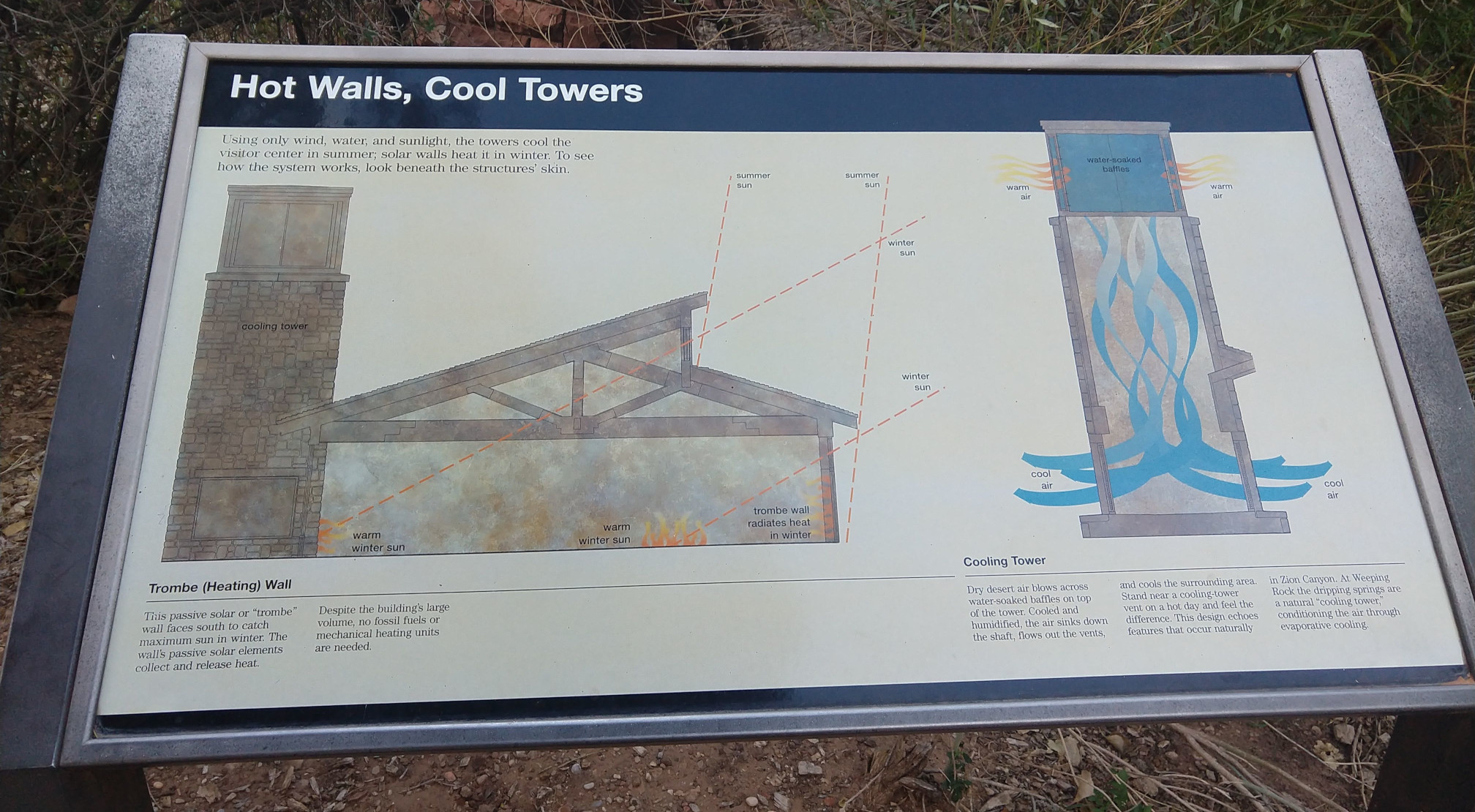The visitor center at Zion National Park has a neat climate control system. I took a picture of the sign describing it when I visited.

It was pleasantly cool in the summer. I can’t attest to its effectiveness in winter. The cooling mechanism does rely on having a convenient source of water, so not exactly a globally scalable solution, but great where it works. Presumably it also requires a smidge of power to pump the water up the tower.
Excerpts from the sign below:
Using only wind, water, and sunlight, the towers cool the visitor center in summer; solar walls heat it in the winter…
Trombe (Heating) Wall: This passive solar or “trombe” wall faces south to catch maximum sun in winter. The wall’s passive solar elements collect and release heat.
Despite the building’s large volume, no fossil fuels or mechanical heating units are needed…
Cooling Tower: Dry desert air blows across water-soaked baffles on top of the tower. Cooled and humidified, the air sinks down the shaft, flows out the vents, and cools the surrounding area. Stand near a cooling-tower vent on a hot day and feel the difference. This design echoes the features that occur naturally in Zion Canyon. At Weeping Rock the dripping springs are a natural “cooling tower,” conditioning the air through evaporative cooling.
So yeah, the cooling tower is basically a swamp cooler, but without the fans and such.
The trombe wall reminds me of schemes used for growing warm-weather plants in regions they have no business being in, covered in these two articles at lowtechmagazine.
Leave a Reply